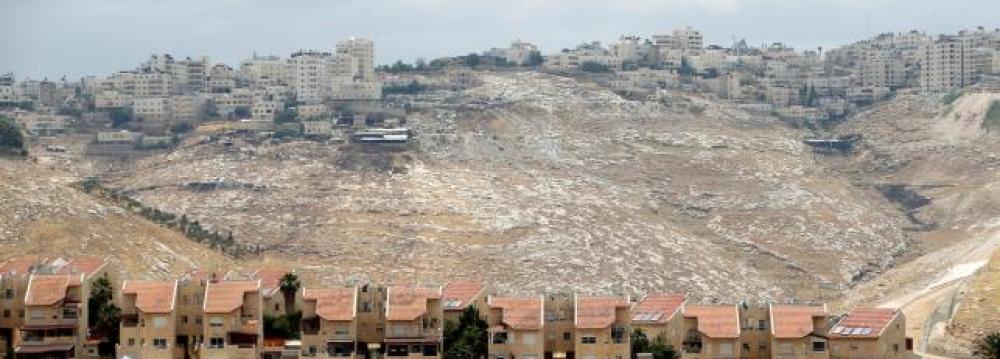In the hills east of Beit-ul-Moqaddas, overlooking the Palestinian city of Jericho and the Jordan Valley, stands a Jewish settlement whose red-tile roofs, neat gardens and brightly colored playgrounds give the sense of permanence.
Mitzpe Yericho has stood on this escarpment close to the Dead Sea—the lowest point on earth—since 1978. It is one of more than 230 settlements Israelis have built on occupied land in the West Bank and East Beit-ul-Moqaddas over the past half-century, Reuters reported.
Diplomats and international monitors are increasingly concerned that the drive, which has seen Israel settle more than half a million of its people at a cost of tens of billions of dollars, may be reaching the point of irreversibility.
The ongoing expansion further diminishes the prospect of any significant progress being made when foreign ministers from 20 countries meet in Paris this week to discuss how to revive Middle East peace efforts, as the settlements have been a central obstacle for at least two decades.
If a peace deal were magically struck tomorrow, Palestinians would expect the Israelis living in Mitzpe Yericho to leave. But its 3,000 residents, nearly all whom are religious nationalists, have no such intention. To them, the settlement enterprise is God-given and irreversible.
The foreign ministers will meet on Friday with the aim of paving the way for a summit later in the year, which they hope the Israeli and Palestinian leaders will attend.
On Monday, in a sign that he is aware of the growing international pressure, Prime Minister Benjamin Netanyahu said he was in favor of parts of the Arab peace initiative, a proposal put forward in 2002 that would grant Israel recognition in exchange for withdrawing from the West Bank and East Beit-ul-Moqaddas, among other steps.
Yet while some momentum may be building, there is scant indication the settlement enterprise can be halted, let alone reversed, leaving a fundamental barrier in the path to peace.
Vast Investment
The settlement project began after Israel captured the West Bank and East Beit-ul-Moqaddas in the 1967 war. In the 1970s, with the government’s encouragement, large number of Jews began moving onto the occupied land. There are now 550,000 of them.
Many live in large blocs near Beit-ul-Moqaddas or the green line that separates Israel from the Palestinian territories, while others live deep inside the West Bank, in highly protected enclaves or pre-fabricated outposts perched on hilltops.
All the constructions are considered illegal under international law. Israel disputes this and plays down the term “occupation”.
The Macro Center for Political Economics, an Israeli think-tank, estimates building alone has cost around $30 billion over the past 40 years.
Barely a month goes by without a fresh announcement from the government or one of its ministries about West Bank territory being declared “state land”, a precursor to settlement building, or a decision to allow new construction to proceed.
At the same time, Palestinians living in a part of the West Bank known as Area C, which accounts for 60% of the total and is where most settlements are located, are being uprooted from the land in increasing numbers.
Under the Oslo accords of the mid-1990s, Israel retains full control over Area C, where large tracts have been declared closed military areas. As a result, Israeli courts tend to approve the removal of Palestinians from the area and the demolition of their homes, even though the accords did not change the illegal status of settlements there.


